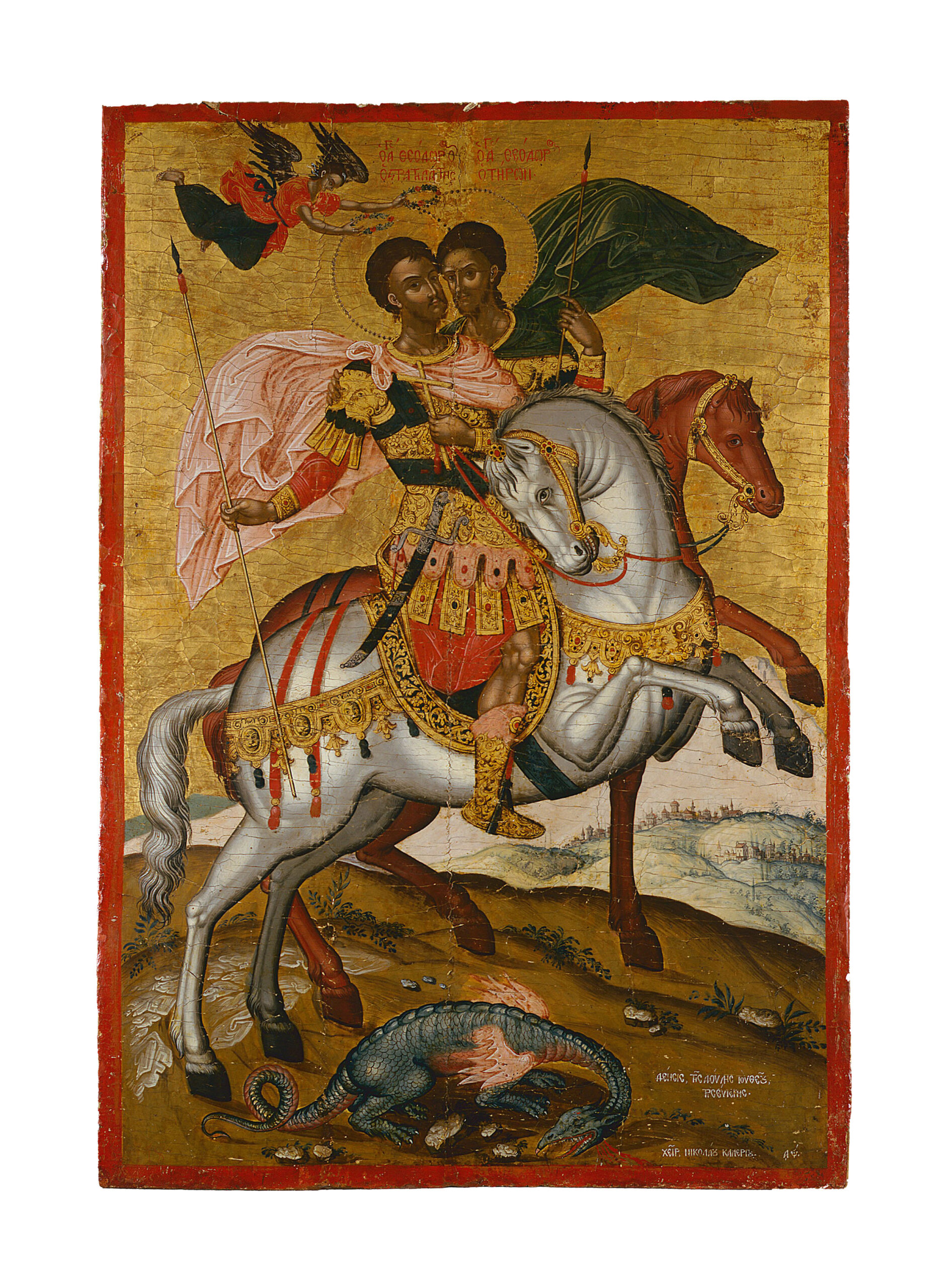

Icon depicting Saints Theodore on horseback
The two Saints Theodore are represented on horseback, moving to the right. Theodore Stratelates, in the foreground upon a galloping white mare, in richly ornamented panoply and billowing cape, turns his head towards the viewer, displaying the cross and the lance. Theodore Teron follows upon a red mare, and also faces the viewer. From on high descends a full-bodied angel on smaller scale, to crown each saint with a floral wreath. On the earth lies the wounded dragon.
The subject of the Saints Theodore on horseback is encountered in a signed icon of the same period by the Zakynthian painter Alexandros Gryparis, dated 1704, in the Byzantine Museum, Athens, but with a different iconography.
Nikolaos Kallergis (1698-1747), a painter from Zakynthos known from a series of works on that island and on Cephalonia, as well as in private collections in Athens, was scion of a Cretan family from Rethymnon, which settled on Zakynthos after their home city was captured by the Ottomans (1645). Characteristic of his art is the adoption of models either of earlier Cretan icons or of others of Western provenance, with a strong decorative disposition. The Canellopoulos icon, whose date (1700) classes it among the painter’s first works, is distinguished by a penchant for decorative detail, which is in keeping with the grace of the antithetic movements of the horses’ heads and the elegance of the poses of both saints. To these traits should be added the accuracy of the ornaments on the trappings of the steeds and the accoutrements of the saints, as well as the emphasis on detail in the landscape in the background, where two cities stand upon a whitish green hill with vegetation.
PUBLICATION
Chatzidakis N. 2007. Catalogue no. 216, in Skampavias K.—Chatzidakis N. (eds), Paul and Alexandra Canellopoulos Museum.Byzantine and Post-Byzantine Art, Athens, 424–427.
